| Content:
|
General rules for propagating roses
There are two ways to grow roses on your own property: grafting or cuttings.The easiest way is to propagate roses from cuttings. It is better to carry it out in April-May or June-July, when the buds of the mother bushes are colored. In addition, in the fall, when pruning plants for the winter, you can also take cuttings from roses.
It is worth saying a few words about the advantages of this method of propagation over grafting. Plants obtained with its help do not form root shoots, which greatly simplifies care. In the southern regions they winter better, but even when the above-ground parts freeze, they are restored from dormant buds on the roots. The ease of obtaining planting material should also be taken into account. After all, even roses from a bouquet can be propagated in this way.
Another big advantage of this method of propagation is that self-rooted roses are much more durable than grafted ones.
And among the shortcomings, there is perhaps only one: in the first winter, rooted cuttings do not overwinter well. This happens because in one summer the young plant does not have time to grow a sufficiently powerful root system. Therefore, it is better for the plants to overwinter the first winter in the cellar.
Rooting cuttings
What kind of soil is needed?
The soil should be light and breathable. For this, turf and leaf soil with an admixture of sand and well-decomposed humus is used. Approximate composition of bulk soil: turf soil - 2 parts, sheet soil - 1 part and sand - 1 part. On top of such nutrient soil, washed river sand is poured in a layer of 3-3.5 cm, which is a good neutral medium and provides access of air and moisture to the base of the shoot, which contributes to the rapid formation of roots on the lower cut of the cutting.
The best time to propagate roses from green cuttings is June - July, that is, the time before and during flowering. The shoots can be used for cuttings when the buds begin to open on them.
How to prepare cuttings
Cut off the shoot with formed axillary buds, ready for growth. Cuttings are cut from the shoot with 2 - 3 buds on each. The upper cut is made 2 cm above the bud, and the lower cut is made directly below the bud. To avoid damaging tissue, use a sharpened tool. The lower leaves are removed and the upper ones are shortened by half.
Before planting, it is advisable to treat the lower cut with growth substances (heteroauxin, Epin), prepared according to the instructions. You can do without stimulants, but then the result will be somewhat worse.
How to plant
Cuttings are planted in the ground to a depth of 1.5-2 cm. Deeper planting slows down rooting. The distance in the row is 7-8 cm, between the rows about 8-10 cm.
Under what conditions does rooting occur?
A very important condition that determines the success of the business is the regime of keeping the cuttings in the greenhouse in the first 15-20 days after planting, that is, until rooting. The cuttings must receive the required amount of moisture, heat and light. Watering the soil should be moderate, as too wet can cause rot.
But in the greenhouse it is necessary to maintain high air humidity (80-90%) so that there are constantly droplets on the leaves.To do this, in addition to moderate watering, rose cuttings are regularly sprayed with water from a spray bottle. Before rooting begins, the greenhouse must be covered; it is opened only during spraying.
In order to avoid burns to the cuttings on hot sunny days, the cuttings need to be slightly shaded. If the air in the greenhouse is too overheated, it is ventilated, but it is better to do this in the morning and evening hours. The greenhouse should not be opened during heavy rains to avoid waterlogging the soil.
If all conditions are met, cuttings of most varieties of roses root by 70 - 90%, and for climbing roses - up to 100%
After the shoots have taken root, they are transplanted into small pots with a diameter of 9-11 cm in light soil consisting of 1/3 turf, 1/3 leaf soil and 1/3 river sand. Immediately after planting, for better rooting of plants in pots, they are placed in a greenhouse, digging the pots halfway into the ground.
The best conditions for storing cuttings in winter are a dry, ventilated basement or cellar with a temperature of 1-3°C and an air humidity of 65-70%. Seedlings are buried in an inclined position in boxes with wet sand.
Cuttings of roses from a bouquet
This video shows how to cut roses from a bouquet in cups:
How do the cuttings feel after two weeks:
Roses can be propagated using cuttings from a bouquet in two ways.
Method one: in this case, everything is done almost the same as described above.
- Cut the middle part of the rose stem from the bouquet into cuttings 12-15 cm long with two to three buds. Make the lower cut on the stem at an angle of 45 degrees, 1 cm below the bud.The top cut should be straight and no higher than half a centimeter above the bud.
- Remove the bottom sheet and shorten the top sheets to one third. Trim the thorns.
- Burn the top cut with potassium permanganate or brilliant green.
- Keep the cuttings in aloe juice or growth preparations for 12 hours.
- Then dip the bottom cut into the powder of any of the preparations that promote root formation.
- Plant the cuttings in prepared soil. Before planting, sprinkle the surface of the soil with sand, a layer of 3 cm. Plant to a depth of one and a half to two centimeters.
- Pour, cover with plastic bottles with the bottom cut off, neck up. Watering should be done through the neck of the bottle.
- If a bud appears, it must be removed immediately.
In this way, you can try to propagate roses using cuttings from a bouquet. This option is somewhat simpler, but no more than three cuttings out of ten take root this way.
From this video you will learn how to cut roses from a bouquet directly into the ground:
Method two: With this method of propagation, the percentage of rooting is noticeably higher, but it will take much longer to tinker with it. First, you need to wait until green shoots begin to grow from the stem of the donated rose, and only then try to root these young shoots.
This is how Olga Rubtsova, a gardener from the Leningrad region, does it.
I propagate roses from cuttings, which are given to me in bouquets for the holidays. But this process is long. If the donated flowers were in the store for a long time, and aspirin or other drugs were added to the water there so that the rose would last a long time until it was bought, then such cuttings are not suitable for propagation; they die on the fifth day. The lower part of the plant turns black.It’s better to throw away such a rose right away - it won’t do any good.
And you shouldn’t cut from a rose that has a slightly wrinkled stem - it will also die in the near future. The desired cutting should be dark green, smooth, buds should be visible in the leaf axils, and the leaves should be dark green in color. The easiest way to propagate roses that are given on March 8th. They didn’t have time to sit on the counter, and in the spring the plants take root better.
I cut a flower from such a rose on a short “leg” and place it in water separately. The remaining twig, which I will use for propagation, is washed under warm water with laundry soap to prevent pests.
At the bottom I make an oblique cut with a very sharp knife or razor. I put the cutting in a glass. I put a transparent plastic bag on top. I tie the bag so that there is a small hole for air and no greenhouse conditions are created for the plant. I put the cutting under a fluorescent lamp.
Old leaves may fall off - this is normal. The main thing is that they need to be removed from the package in time. After some time, sprouts will appear from the dormant buds. The leaves on such sprouts are first reddish in color, then they become light yellow, then light green. When the leaves on the shoot become dark green (like the parent leaf), the shoot is ready for cuttings.
I use a razor to cut such a shoot-cutting from the stem and place it in a dark-colored medicine bottle (roots will appear faster in a dark container).I tried to cut a cutting with a heel - a piece of the mother plant, but I noticed that such shoots take longer to take root. I put a small plastic bag on top and don’t tie it, but throw it over it. I put the cutting under a fluorescent lamp.
You can add a little ready-made solution of HB 101 to the water. As I already said, the process of propagating roses using cuttings from a bouquet is very long, only after one and a half to two months a thickening of a light color forms at the end of the shoot. This is the formation of callus, on which roots will subsequently appear. When roots appear (at least 1 cm), I plant the cuttings in a pot. I put a plastic bag on top, but don’t tie it. After 2-3 weeks I remove the package. Once a week I water the plant with HB 101 or Krezacin.
Roses with dark-colored flowers take root best - red, burgundy, dark pink. Roses with light-colored flowers - white, yellow, light orange - take root the worst.
Growing roses from cuttings under a jar
There is such a simple and affordable method of propagating roses from cuttings in the garden under a jar. The shoots are prepared as usual with two to three internodes, the lower leaves are completely removed, and the upper ones are shortened by half. Choose a place in the garden where there is no direct sunlight. Do not plant it completely in the shade, as the rose will live there under the jar until next year, and it still needs light to develop.
For successful rooting, light, breathable soil is needed. If necessary, add sand to the ground and dig everything well. Stick the cuttings into the ground at an angle, deepening the lower buds.You can place two or three rose cuttings under one jar. Water well and cover them with a three-liter jar.
Now all that remains is to water the ground around the jar if there is no rain. Sprouts appear in about a month, sometimes earlier. They will be visible through transparent glass.
For the winter, the jar must be covered with fallen leaves or cut annuals. The shelter is removed only next year, when stable warmth sets in, around the end of May.
As you can see, this method is very simple and inexpensive. All cuttings take little time, and care comes down to watering only. If your plans are to propagate a large number of roses and you have a lot of cuttings, then it is more advisable to make a greenhouse and root the greenhouse.
Rooting a home rose in vermiculite
Indoor roses are easily propagated by cuttings. It is very convenient to root shoots of miniature roses in vermiculite, perlite or coconut fiber. Almost 100% of cuttings take root with minimal care.
Make drainage holes in a plastic cup, fill it with perlite, moisten it well and stick the cutting into it to a depth of no more than 2 cm. Cover the cup with a bag and place it on the window. Moisten perlite from time to time, but it usually stays wet for a long time. In the photo you see cuttings with grown roots. They were put into rooting 3-4 weeks ago and now it’s time to transplant them into a pot with soil.
You can propagate roses from cuttings even easier. To save yourself the hassle of transplanting rooted cuttings, immediately prepare a pot of soil. Make a hole in the soil with your finger and fill it with vermiculite or coconut fiber.Stick a cutting there and after a while, the roots that appear will grow through the vermiculite and penetrate into the soil. The young rose will not need to be replanted anywhere; it will immediately begin to grow and develop.
In addition to vermiculite and coconut fiber, you can also cut roses in water.
Rooting in water has one interesting feature: the boiled water poured for the first time cannot be changed, you can only add the same boiled water as it decreases in the jar. Even if it turns green, do not pour it out under any circumstances! The jar should be made of dark glass. Oddly enough, the cuttings take root very well this way.
Autumn breeding
In regions where summers are hot and dry, it is better to take cuttings of roses in the fall. When you prune your roses for the winter, prepare the cuttings and add them to the garden until spring. In early spring, plant them in cuttings or in a permanent place as described above. It's even better if you stick the cuttings into the ground right away. Cover them with cut plastic bottles, and cover them with tops and leaves for the winter. In the spring, almost all of them will take root.
A very interesting video about autumn cuttings of roses. One of the simplest, most accessible and effective ways:
Now look what happened in the spring:
Cuttings using the Burito method
This video is about the Burrito method:
Shoots for this method should be taken longer and thicker than with other rooting methods, 20 centimeters in length. All leaves must be removed.
Next, we tie the cuttings into bundles and wrap them in newspaper. We moisten the newspaper with water, but so that it does not drip from the newspaper, and place the bundle in a bag.
We forget for a week or two. Then you can unroll and check the cuttings.Depending on the variety, some form callus during this time, and some even form roots.
Approximately the same result can be achieved if you wrap the lower cut of the cutting with damp cotton wool and put the cutting in a plastic bag. The rose shoot begins to “come to life” in a humid environment, at a temperature of 23 - 26 degrees, and there are many options for creating such conditions.
Watch a video about unconventional rose propagation methods:
Is it possible to root roses in potatoes?
Nowadays they write a lot about how wonderfully rose cuttings take root in potato tubers. I couldn't help but try this wonderful method. I won’t describe everything in detail, but I’ll say right away that nothing good came of it. Out of 5 cuttings, not one was accepted.
Some lucky ones write that everything went well for them, but at the same time they clarify that after inserting the cutting into the potato, they buried it in the ground. And although most experimenters grow potatoes instead of roses, some also have cuttings that take root. But here, most likely, the key word is “land” and not “potatoes”. Everyone knows that cuttings take root in the ground.
It’s very interesting to know if anyone managed to root a rose in a potato? Only in a tuber not buried in the ground.
Don’t consider it difficult, write in the comments.
And here is another video on this topic, the man also tried in vain:
As you can see, there are many ways to cut roses. Experiment, try and be sure to find a method that suits you best.
We have many more interesting articles about plant propagation:
- The most effective ways to propagate clematis (it turns out it’s quite simple)
- We learn to propagate honeysuckle by cuttings.
- Propagation of chrysanthemums by cuttings (methods giving 100% results)
- The easiest ways to propagate remontant raspberries.
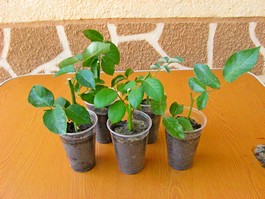
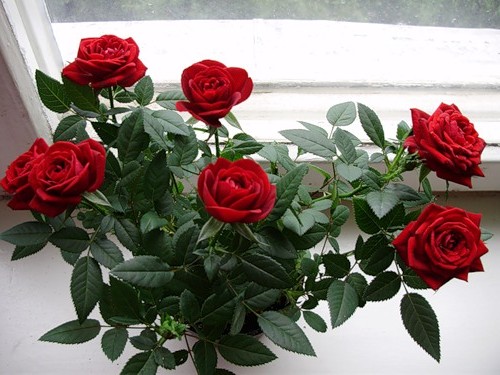
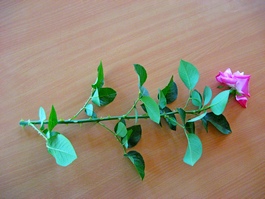

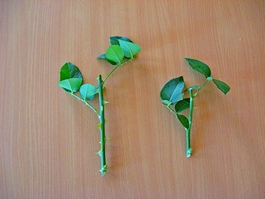
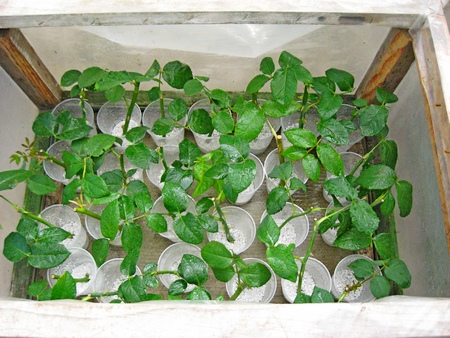
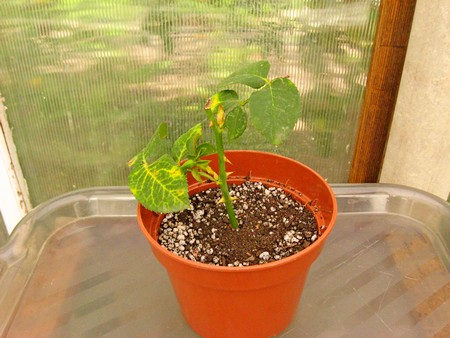
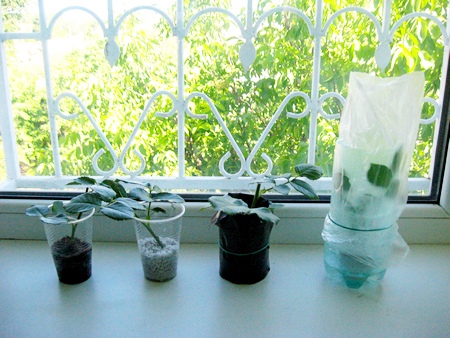
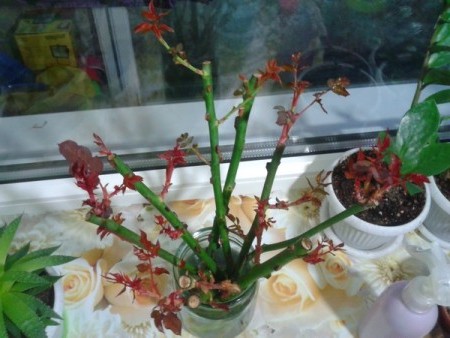
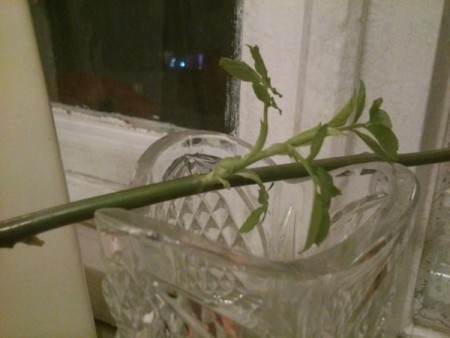

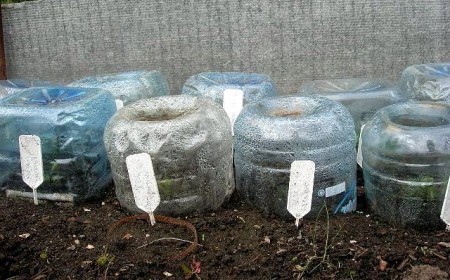
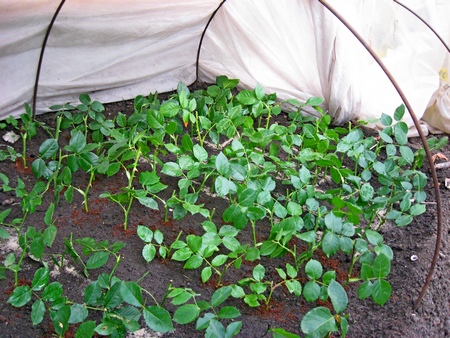

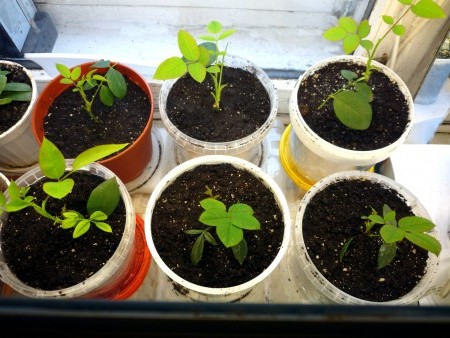
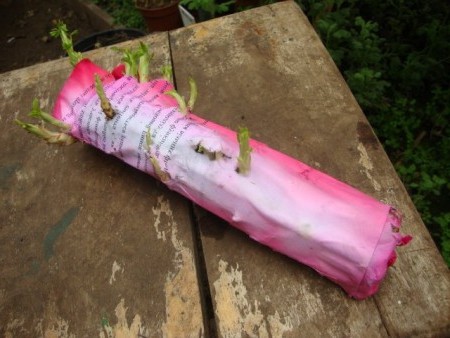
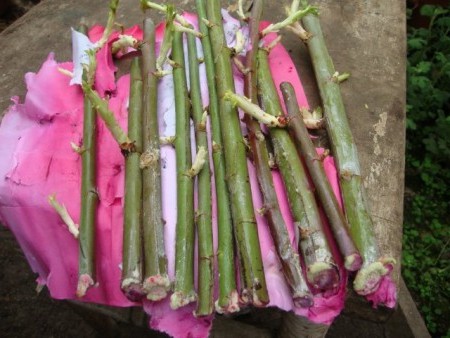

 (10 ratings, average: 4,40 out of 5)
(10 ratings, average: 4,40 out of 5) CUCUMBERS NEVER GET SICK, I'VE BEEN USING ONLY THIS FOR 40 YEARS! I SHARE A SECRET WITH YOU, CUCUMBERS ARE LIKE THE PICTURE!
CUCUMBERS NEVER GET SICK, I'VE BEEN USING ONLY THIS FOR 40 YEARS! I SHARE A SECRET WITH YOU, CUCUMBERS ARE LIKE THE PICTURE! You can dig a bucket of potatoes from each bush. Do you think these are fairy tales? Watch the video
You can dig a bucket of potatoes from each bush. Do you think these are fairy tales? Watch the video
 How our fellow gardeners work in Korea. There is a lot to learn and just fun to watch.
How our fellow gardeners work in Korea. There is a lot to learn and just fun to watch. Eye trainer. The author claims that with daily viewing, vision is restored. They don't charge money for views.
Eye trainer. The author claims that with daily viewing, vision is restored. They don't charge money for views. A 3-ingredient cake recipe in 30 minutes is better than Napoleon. Simple and very tasty.
A 3-ingredient cake recipe in 30 minutes is better than Napoleon. Simple and very tasty. Therapeutic exercises for cervical osteochondrosis. A complete set of exercises.
Therapeutic exercises for cervical osteochondrosis. A complete set of exercises. Which indoor plants match your zodiac sign?
Which indoor plants match your zodiac sign? What about them? Excursion to German dachas.
What about them? Excursion to German dachas.
Thank you, very useful, I’ll try it!
My comment relates to roses. Thank you!
Tatyana, I am very glad that the article was useful to you. I am sure that everything will work out for you.
I collected rose cuttings from autumn cuttings. I treated the cuttings with a solution of heteroauxin. After 3 days, the cuttings produced very good leaves, and then twigs. But after a while the leaves and twigs began to dry out and the cuttings began to turn black... all the cuttings died. This is my first experience growing roses from cuttings. Can anyone tell me what was done wrong?
Galina, you chose not the best time for cuttings. In autumn, all nature prepares for winter “hibernation”. Even seeds in the fall germinate much worse and more slowly than in the spring. It is better to bury the shoots of roses cut during autumn pruning until spring or immediately stick them into the ground and cover them with leaves and grass. This way they will have a much better chance of taking root. And the fact that “after 3 days the cuttings produced very good leaves” is more bad than good. Cuttings on which young shoots quickly appear usually do not take root; all their energy goes into the development of green mass, but it should be on the development of roots.
A lot of useful information! I'll definitely take the advice into account
True, no matter how many times I tried to root roses from a bouquet, nothing worked
Hello! Thank you for the article, I did everything according to your recommendations, added perlite to the center of the pots with nutrient soil, put it all in the greenhouse and spray it several times a day, only one thing is not clear: after what period can the greenhouse be opened and grown further just in pots? The roses have been in the greenhouse for a week now. And one more question, is it possible to leave those roses that take root in the house on the windowsill, so that they overwinter in warmth, and in the spring I plant them in the garden? Thank you in advance:)
Natasha, you can remove the film from the cutting only when it takes root. In terms of time this is from one to two months. If the roses took root in plastic cups, then the young roots would be clearly visible there. Since you are rooting in pots, be guided by the growth of the young shoot. If it is actively growing, then most likely the cutting has taken root. Remove the film gradually, not all at once. You can gradually lift the edges of the film or simply make holes in it, increasing the flow of fresh air to the plant every day. In general, this is a very crucial moment; many rooted cuttings die due to the sudden removal of cover. I do not recommend leaving garden roses in your apartment for the winter. From a lack of light and excess heat, they will be thin, elongated and most likely die. For the winter, send them to a cellar or a room with similar conditions.
Please tell me, now my cuttings are forming roots, they will probably take root by December. Please tell me in more detail how to move them to the cellar - should I water them there?
Yulia, if the cuttings take root only in December, then there is no point in transferring them to the cellar.It’s better to stand on the windowsill, but you need to make sure that spider mites don’t appear. If you notice cobwebs on the leaves, immediately treat with some kind of preparation. For flowers overwintering in the cellar, the soil must be slightly moist. If it dries out, you need to water it a little, otherwise the plants will die. Sorry for the delay in replying - I was away.
Hello! Please advise how to cure and revive roses? They are garden plants, but they grow at home on the windowsill. They were given to me in the fall and I planted them. Looks like I flooded them. The side shoots began to dry out, and now the trunk began to darken. What can be done?
Tatyana, garden roses winter very poorly in an apartment. There are many reasons: they are eaten by spider mites, there is not enough space for the roots in the pot, it is hot and dry in the room. Attempts to grow garden roses indoors rarely end in success, but there are a lot of problems with them. Try pruning your rose as you usually prune for the winter and place it in a cellar or room with similar conditions. It seems to me that this is the only way to save the plant. If there is no basement, you can try putting a plastic bag on the bush, just tie it above the root collar so that the stem is open near the ground. Sprinkle with copper sulfate (it helps well with root rot) and then water only with warm, almost hot water and plenty of light.
Everything is wonderful and clearly explained. For three years I have been trying to get roses with red flowers from cuttings of red varieties of roses, but after a year all the roses bloom with white flowers and the number of petals in a flower is not as large as that of the roses taken for cuttings.True flowering all summer long.
Irina, I had a similar story, only with verbena. We took cuttings of ampelous verbena blooming with red and white flowers, and the cuttings bloomed with almost all the colors of the rainbow. I do not know how to explain it.
Very good and informative articles! I have experience in growing plants, but I find a lot of interesting things for myself. I also like that the articles contain a lot of videos on the topic. But I was looking for a button to share articles on social networks, and didn’t find it. But this one Many people need the information, and it’s also useful for advertising the site.
Thank you for your kind words, Alla. I am very glad that my site was useful to you. But I really don’t have a “Share” button. Somehow I didn’t attach any importance to this, but now I’ll definitely add it.
Hello! That is, did I understand correctly, I made a cutting of an indoor rose and just put it in an opaque glass of boiled water and nothing else? Don't you need to cover it? Just don’t change the water, but add it? Or is it better to put it in a jar and close it with a lid? I don’t want to lose the rose, I ended up with such a copy in my hands..
Yes, Julia, you understood correctly. It is not necessary to cover the cuttings placed in water. But if I were rooting a rare specimen, I would do it in vermiculite. I get the best results when cuttings in vermiculite or perlite.
My basement is damp in the winter. Can I store rose cuttings in cups until spring? Thanks in advance.
Alex, yes you can.It’s even good that the basement will be humid, but the temperature must also be slightly above zero.
Hello! There is a gorgeous red garden rose that I would like to take cuttings from. Please tell me, if the basement is humid and the temperature in winter is 10-12 degrees, will the rooted cuttings be able to overwinter there?
Evgenia, at this temperature the cuttings will most likely come out of dormancy and begin to grow, and this is extremely undesirable. White, thin shoots will appear, which will then dry out and the cutting will die. But it’s difficult to say for sure. It happens that in ideal conditions some of the cuttings die, but sometimes they survive in the most unfavorable conditions.
I rooted my roses using the burrito-from-a-bouquet method last January. In the spring they were planted in the ground. Now I have four bushes of burgundy roses!!! The flowers are the same in shape and color as in the bouquet. I tried to root it several more times, did everything exactly the same, but everything was unsuccessful. Apparently the material was already diseased, the stems turned black already at the rooting stage, and soon died. Now I’m again trying to root the cuttings that I received when pruning roses in the fall. I hope for success.
Good luck to you, Farida!
Thank you!
Hello. A week ago I took cuttings of roses from the bushes. Soaked it in a glass of water with honey and aloe. I wrapped it in a wet rag, then a bag and to the battery. Today I looked and there will be roots! The roses have already survived -10-15 frost. Question: what to do next if there are roots? Thank you.
Lyuba, if the beginnings of roots have already appeared, then it is better to immediately plant the cuttings in the ground. You probably don’t have your own soil in the middle of winter, buy it at the store, they have a choice. Plant in plastic cups or bottles, then the roots will be clearly visible. Build a greenhouse on top, even from an ordinary bag. When you see that the cuttings have roots, begin to gradually open the greenhouse. That's all.
03/18/2018 I bought rose cuttings in the store with small shoots, how will I preserve them until May (planting in open ground)?
Lyuba, plant the cuttings in pots with soil. There are no other options.
Why do all this at all? There are plenty of roses in the market and in stores - go choose and buy them.
I also tried to root a cutting in a potato, but it didn’t work. I didn’t bury it in the ground, the cuttings in the potatoes stood on the window.
Last year, having read how well roses take root in potatoes, I decided to make money on it. I stuck about 20 or 30 cuttings into the potatoes, buried them in the ground, covered them with lutrasil and began to wait. After 2 weeks, potato shoots appeared. After another 2 weeks, realizing that nothing had worked out for me with growing roses, I removed Lutrosil and began to take care of my potato plot. As a result, I dug up almost a bucket of new potatoes. I recommend this method to everyone; if cuttings don’t work out, at least you can dig up some potatoes.
Every cloud has a silver lining, Tatyana!